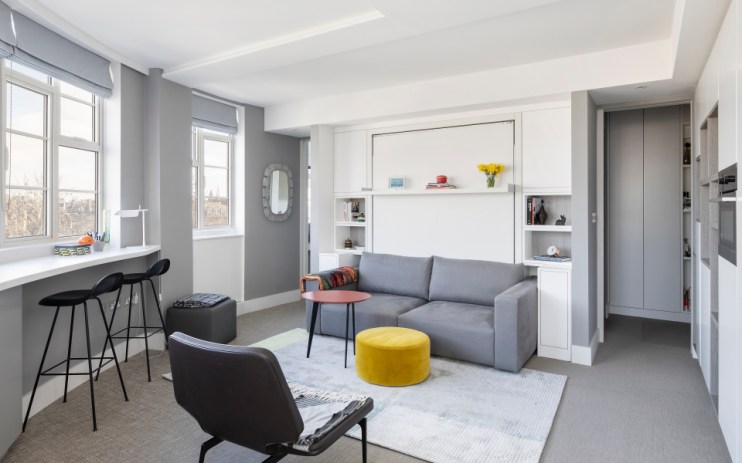London sees the return of the pied-à-terre

Demand for second homes came to a grinding halt in the spring of 2020 when Covid changed the world as we knew it.
As stock markets began to fall and Boris announced that we could no longer leave the house for anything more than the essentials and a quick walk around the block, most pied-à-terre purchases across the capital fell through almost overnight.
We often talk about how robust the London property market can be during periods of global economic downturn, political unrest, and taxation reform and this again rang true over the course of the pandemic, as London vendors simply ‘battened down the hatches’ and were prepared to wait out the storm.
As last year unfolded and our new lifestyle began to evolve, people started to take stock and as a consequence, redefined ‘home’. The move to the country was of course well documented, as many Londoners fled the city in search of space and a rural setting – faced with the prospect that we would never return to the office on a full-time basis. The truth of the matter was that many of these buyers were always planning to move out of London, Covid just expedited the process.
For those less inclined to turn their back on the city in the hope that life would one day return to ‘normal’ – we began to see an increase in activity within the more domestic markets such as Fulham, Wandsworth and Notting Hill. This was largely driven by the need for more space, home offices and gardens – Notting Hill for example saw unprecedented levels of demand for family houses with direct access to communal gardens.
As quality family houses performed well during the last 18 months, and in some cases increased in value by as much as 10 per cent, flats with no outside space across central London went the other way. The lack of international buyers on the ground being the main driver, which resulted in very little activity across PCL and for those vendors needing to sell, they did so at a discount.
Fast forward to the present day, and the landscape has changed dramatically. Although most companies have adapted to a more flexible way of working, Zoom hasn’t entirely replaced the need for human interaction. The return to the office is gathering pace, with employees once again faced with lengthy commutes into the city.
As a result, we have recently been instructed to buy several apartments on behalf of domestic clients based in the countryside, in areas such as Marylebone and London Bridge, due to their proximity to the train stations.
These clients typically prefer period properties that have been renovated to a high specification and benefit from a porter – essentially a property that can serve as a ‘lock up and leave’.
Furthermore, many of our international clients are now gearing up for a return to London later this year. These clients tend to lean towards Knightsbridge and Belgravia; addresses such as Cadogan and Eaton Square are firm favourites but a recent run of new developments with five star hotel associations have proved very popular.
Business and practicality aside, this issue brings into focus exactly why London has such domestic and global appeal: the quality lifestyle. As lockdown measures were eased earlier this year, hospitality, the arts and cultural establishments all began to get back on their feet. I for one could not be happier to see the city return to its former glory.
The purpose of a pied-à-terre isn’t just somewhere to sleep for a few nights a week, it allows the opportunity to benefit from all that this great city has to offer.